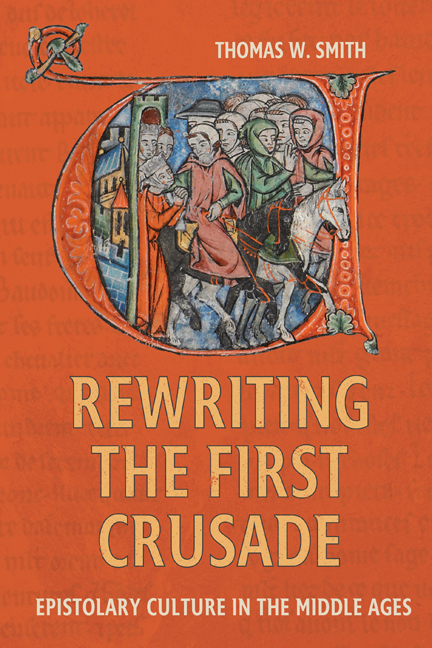Book contents
- Frontmatter
- Dedication
- Contents
- List of Illustrations
- Acknowledgements
- List of Abbreviations
- Introduction
- 1 The Call from the East: The Letters of Alexios I
- 2 The Launch of the Crusade: The Letters of Urban II, 1095–96
- 3 Letters from the Crusader Host, 1097–98
- 4 Letters from the Leaders of the Crusade, 1097–98
- 5 Interpreting the News from the East, 1099–1100
- 6 First Crusade Letters and Medieval Manuscript Cultures
- Conclusion
- Appendix: New Manuscripts of First Crusade Letters
- Bibliography
- Manuscript Index
- General Index
- Crusading in Context
6 - First Crusade Letters and Medieval Manuscript Cultures
Published online by Cambridge University Press: 09 May 2024
- Frontmatter
- Dedication
- Contents
- List of Illustrations
- Acknowledgements
- List of Abbreviations
- Introduction
- 1 The Call from the East: The Letters of Alexios I
- 2 The Launch of the Crusade: The Letters of Urban II, 1095–96
- 3 Letters from the Crusader Host, 1097–98
- 4 Letters from the Leaders of the Crusade, 1097–98
- 5 Interpreting the News from the East, 1099–1100
- 6 First Crusade Letters and Medieval Manuscript Cultures
- Conclusion
- Appendix: New Manuscripts of First Crusade Letters
- Bibliography
- Manuscript Index
- General Index
- Crusading in Context
Summary
Having pulled apart the corpus of letters from the First Crusade, exposing some as confections, and picked out later additions and emendations from the original texts, it is appropriate now that we reunite the material and utilise the epistles, both genuine and confected, in a different mode of enquiry. For if we blur the distinction of epistolary reality, the confected letters are just as valuable as the genuine ones in shedding light on how medieval audiences engaged with the crusade as part of ecclesiastical scribal communities. This chapter analyses the transmission and reception of the epistles in manuscript, further emphasising reader habits and responses to their texts and locating them in networks of social relations. It seeks to discover what this can reveal about scribe–readers’ knowledge of the crusade from the letters in circulation, where, when, and with which other texts they consumed them, and how they received them, engaged with them, and rewrote them. Such questions cast the letters in a different light and open new avenues of exploration into how European religious communities contributed to the crusades through the copying of texts as a form of ‘scribal crusading’ on par with physical crusading activity.
Transmission
In order to examine the transmission of the letters from the crusade, it is necessary to study a representative sample that can be used to gauge contemporary interest in the expedition. There are fifty-nine manuscripts copied between the twelfth and fifteenth centuries which transmit the epistulae from the armies of the First Crusade, that is, the letters from the leaders and from the crusader host (including here the Laodicea letter). This represents a substantial manuscript sample. By contrast, aside from the widespread letter of Alexios to Robert I of Flanders, the documents purportedly dated before and after the campaign are transmitted only in a small number of manuscripts. The letters of Urban II from the launch of the crusade, for example, are mostly transmitted in seventeenth- and eighteenthcentury copies. It is apparent that the epistles which captured the interest of medieval audiences were not those written by ecclesiastical administrators but those purported to have been written from the crusade itself, by participants.
- Type
- Chapter
- Information
- Rewriting the First CrusadeEpistolary Culture in the Middle Ages, pp. 154 - 193Publisher: Boydell & BrewerPrint publication year: 2024



